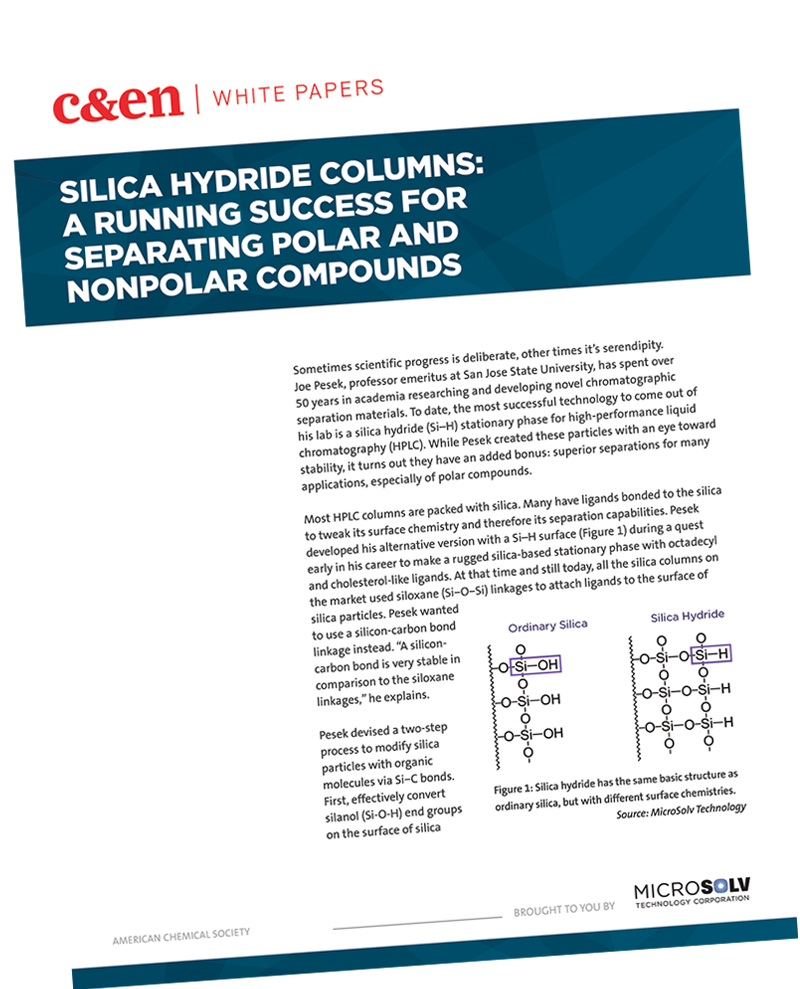

Silica hydride-based columns have a silica hydride monolayer applied to silica particles. This changes the surface polarity of the stationary phase and also enables the attachment of unique ligands to the surface. Ligands are attached to silica hydride particls using a silicon–carbon bond, which is more robust than the siloxane linkage used for traditional silica particles. This leads to robust, long-lasting columns with unusual separation capabilities. Silica hydride columns are suitable for reversed phase, normal phase, and aqueous normal phase chromatography. The latter is a mode unique to silica hydride particles and one that is particularly well suited to the separation of polar compounds.
- Silica hydride-based stationary phases offer robust, long-lasting columns suitable for reversed phase, normal phase, and aqueous normal phase chromatography.
- Aqueous normal phase chromatography is a mode unique to silica hydride columns that is particularly suited to polar compounds. It is distinct in terms of separation mechanism and performance compared to hydrophilic interaction chromatography (HILIC).
- Silica hydride-based stationary phases are sold under the Cogentâ„¢ brand name with a range of different ligands bonded to their surfaces making them suitable for many different types of separations.

Copyright © 2025 American Chemical Society | 1155 Sixteenth Street NW | Washington, DC 20036 | View our Privacy Policy